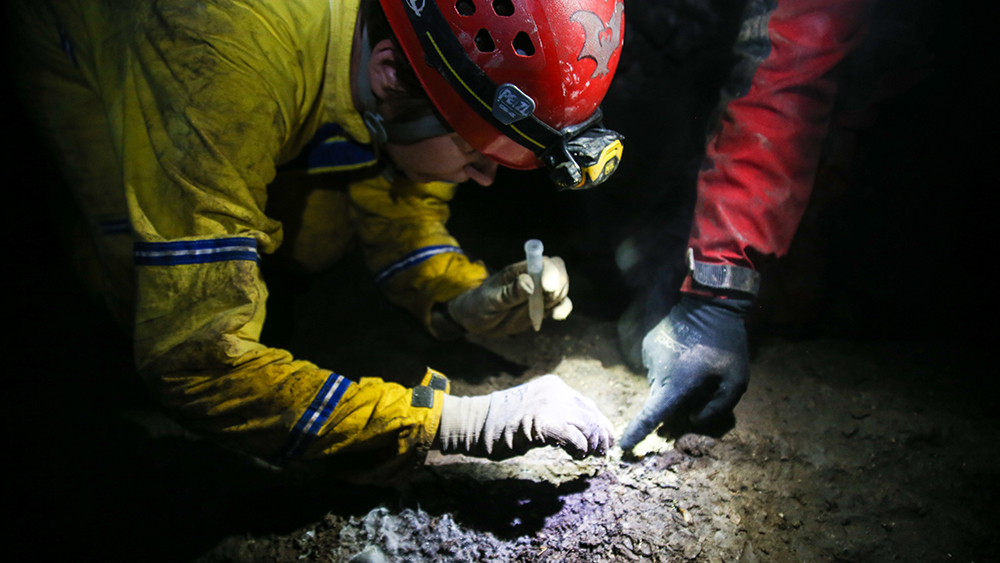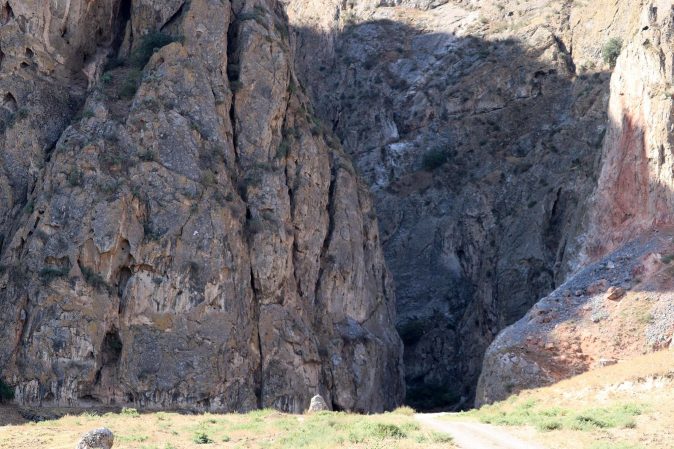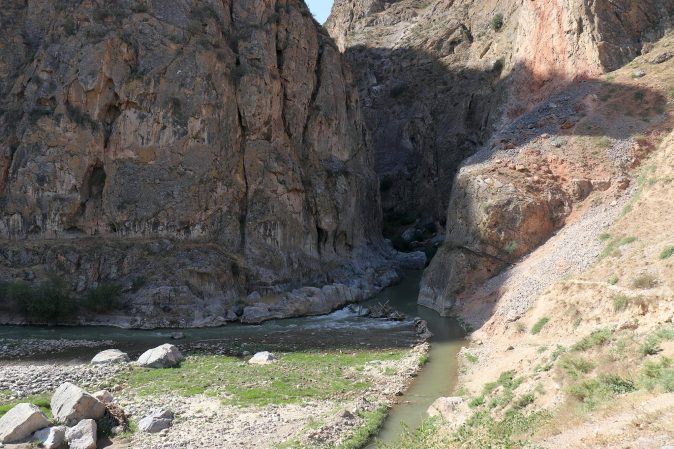
We invite cavers and researchers to take part in a speleological expedition to a new karst area.
Preliminary dates of the expedition August 14 – August 28, 2021
Expedition dates are not fixed.
If you have a speleoclub, speleo federation or a separate team, you can choose the dates convenient for you.
In 2021, we plan to conduct an integrated transboundary speleo-biological expedition to Kyrgyzstan and Tajikistan. In 2019, we made a reconnaissance of karst in Tajikistan. As a result, we understood the logistic features, distance and travel time. We also learned what kind of transport you need to use to get to an interesting area. We saw several unexplored karst areas where caves might be. Previously, no biological research was carried out in tajikistan in karst regions and caves.
In 2018, a group of foreign scientists conducted a series of research in southern Kyrgyzstan. Those were easily accessible areas.
Now we intend to explore new caves on the western slopes of the Fergana Range in southern Kyrgyzstan. This area is the most humid in the Tien-Shan. It receives about 900-1000 mm of atmospheric precipitation per year. The slopes of the Fergana ridge, overgrown with walnut forests, hide several caves, which local residents tell about. A couple of caves in 1971 were described by the orientalist historian Valentin Ogudin, in his book “Cult Caves of Fergana”. Here is what he writes: … “The Kyndyn-Kyry cave is located in the valley of the Kuraves river. This place is very isolated from the outside world. The entrance to the cave is located under a steep rock. The entrance is not visible because of the bushes. Ice stalagmites and huge thin crystals can be seen in the cave. The glacier is on the left side of the cave. In the cave, among the decayed wooden supports, amazing creatures run right on the ice – two-legged centipedes (kivsaki). When I was in the cave for the first time in 1971, there were a lot of them. Later in 1988, there were fewer centipedes, and the size of the cave glacier also decreased. One of the biologists claimed that this is a new species of insect. I think this new insect species is unique. If so, the cave should be protected by the state. “
In another cave, Tash-Unkur, which is located not far from the Kyndyn-Kyry cave, V. Ogudin discovered a natural storage of cave bears. He took several bones from the cave and brought them to Samarkand, where paleozoologists made hydrocarbon analysis. It turned out that these bear bones are about 7-8 thousand years old. This is a subspecies of the brown bear, very large (now there are no such ones in the Tien Shan). The bear was named Ursus Arctos Ogudinus. Also, V. Ogudin discovered a bear skull. The length of the cave turned out to be about 200 m. But according to Ogudin’s description, the cave has a continuation. Therefore, we want to explore the western slope of the Fergana ridge in this area and find unexplored caves.
In Tajikistan, we want to explore the salt caves in the Khoja Mumin salt mountain. The Khoja Mumin salt mountain is a rare geological monument located in the south of Tajikistan. Despite the fact that the area of salt karst is located near the Afghan border, it is safe to conduct research here. Since the borders are guarded by the Russian army. Earlier, several caves were found here, the length and morphology of which are continuously changing over time. Here you can see the unique salt forms formed by brines. In addition, we plan to explore the western part of the Zeravshan Range on the border with Uzbekistan, as well as limestone cuestas in the western part of the Hissar Ragne, north of the Tursunzade city. By genesis, these cuestas are similar to those in which the deepest caves in Asia were discovered. Such as: Dark Star, Festivalnaya, Boy-Bulok and others on the Baysun-Tau ridge in Uzbekistan.
This time we are using a 6WD off-road military vehicle of the KAMAZ type.
We invite all interested cavers and speleo-biologists to take part in this expedition, which will take place in the second half of August 2021. Expedition dates from August 14 to August 27. Dates are subject to change.
The programme and route of the expedition: Day 1. Arrival of participants in Osh city. Day 2. Departure to the Ferghana Range (Kara-Alma village). Days 3-5. Exploration of the karst area and caves. Day 4. Departure from Kara-Alma to Osh - Batken - Khujant (Tajikistan) Day 5. Khujant - Aini - Tursunzade. Days 6-8. Exploration of karst areas along the way to the Hissar Range Day 9. Drive to the salt karst Kulob on the Khoja Mumin mountain range Days 10-12. Exploration of salt caves and surroundings of Khoja Mumin Day 13. Return trip to Kulob - Dushanbe Day 14. Dushanbe - Aini - Khujand. Day 15. Khujand – Osh It is possible to fly from Dushanbe as well.
Those wishing to take part in the expedition can send messages to our email address: info@speleo.kg
We provide all the necessary equipment for the base camp. We also obtain all the necessary permits in order to conduct official research.
We do visa support and official invitations.

















